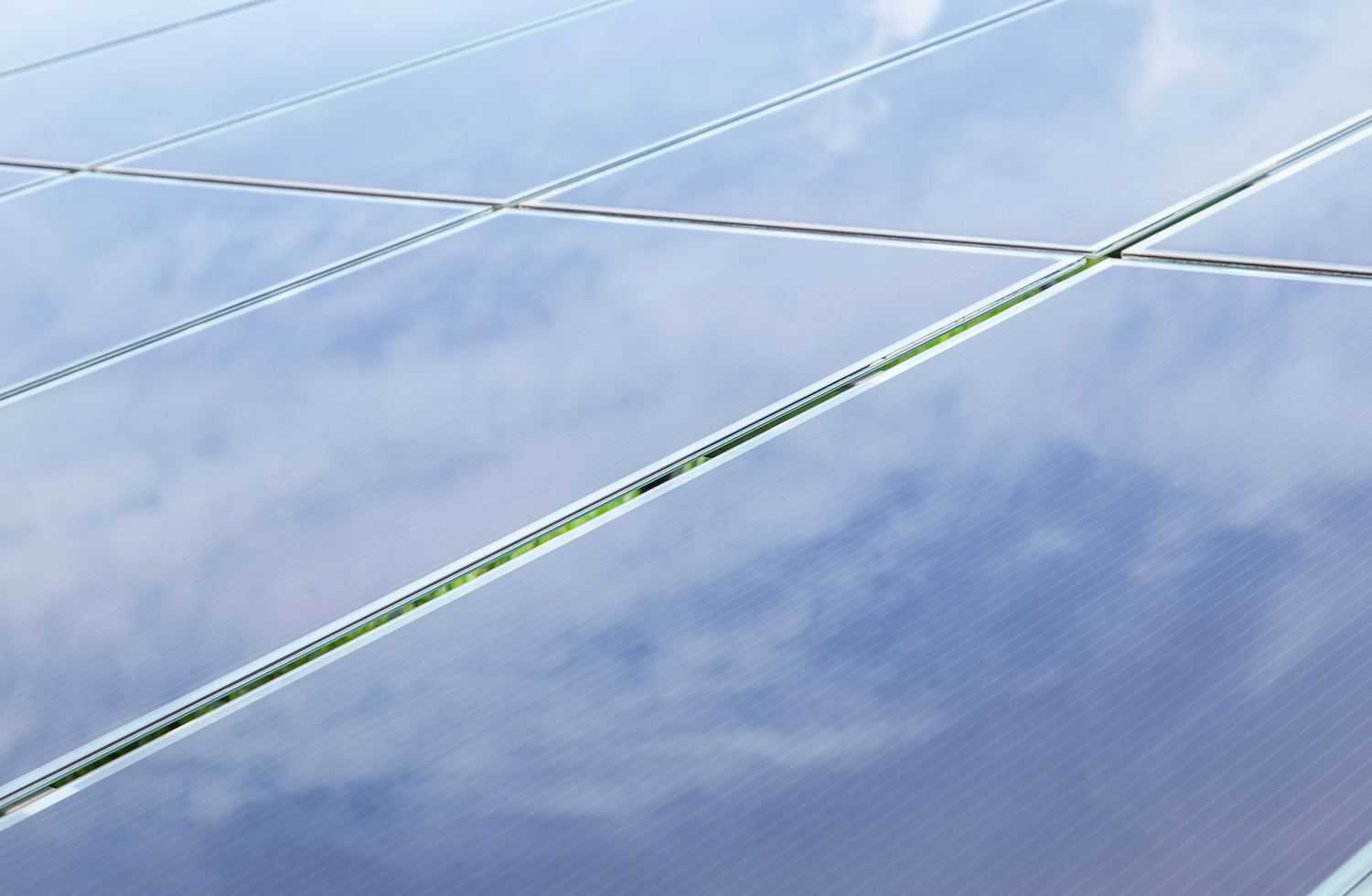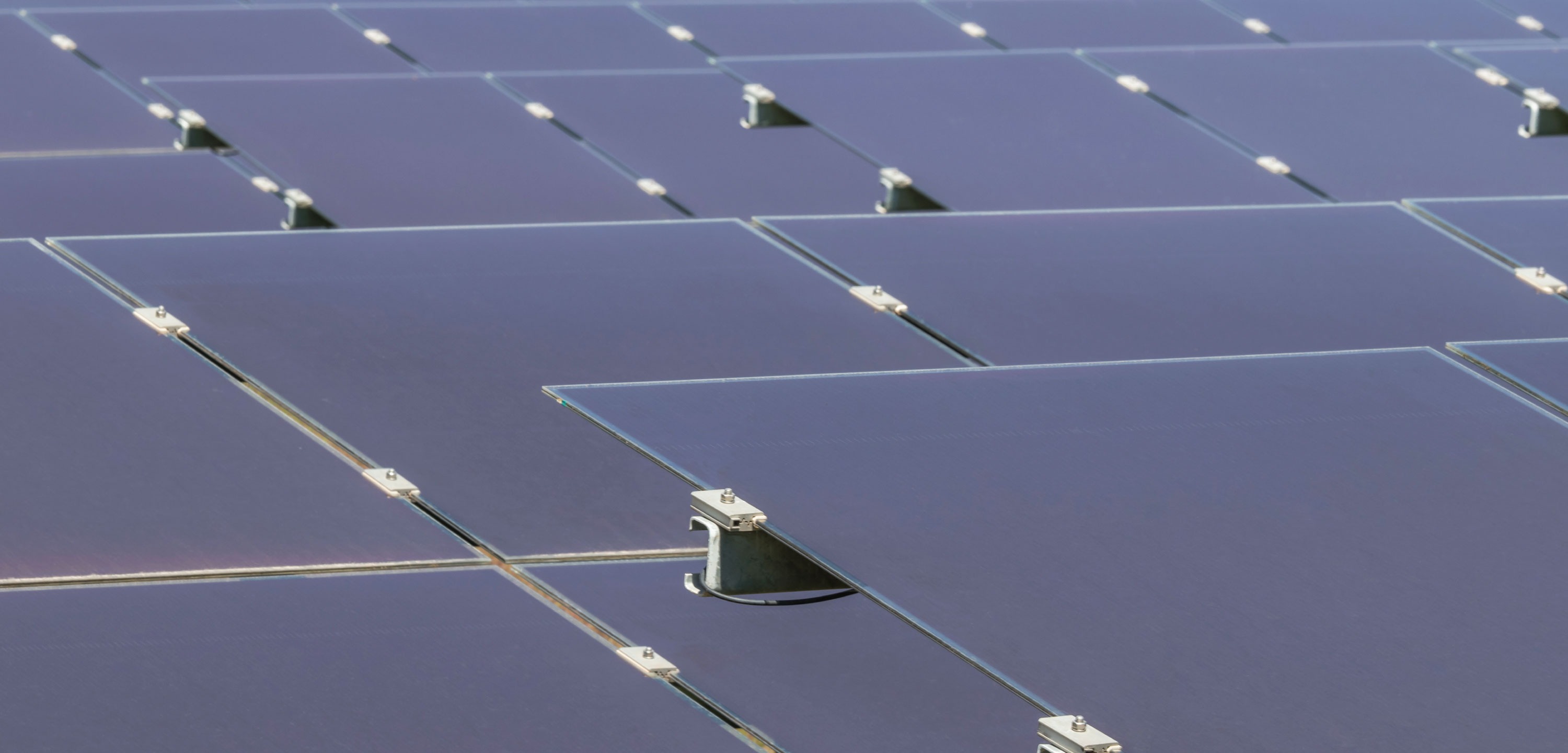Updated 3 months ago
Everything You Need to Know About Thin-Film Solar Panels
Written by Jamie Smith Jamie SmithJamie is a Content Writer and researcher at SolarReviews. A recent graduate of La Salle University in Philadelphia, Jamie earned her B.S. in communica...Learn more , Edited by Catherine Lane Catherine LaneCatherine has been researching and reporting on the solar industry for five years and is the Written Content Manager at SolarReviews. She leads a dyna...Learn more

Why you can trust SolarReviews
SolarReviews is the leading American website for solar panel reviews and solar panel installation companies. Our industry experts have a combined three decades of solar experience and maintain editorial independence for their reviews. No company can pay to alter the reviews or review scores shown on our site. Learn more about SolarReviews and how we make money.
Not all solar panels are created equal. In fact, there are actually three main types of solar panels: monocrystalline, polycrystalline, and thin-film. Each one can be used in different scenarios.
Thin-film solar panels are made of very thin layers of photovoltaic materials, making them extremely lightweight and sometimes even flexible. You’ll find them primarily used in industrial and utility-scale solar projects because they require a lot of space to generate the same amount of electricity as mono or polycrystalline panels.
If you’re curious about the solar technology of thin film panels, what they’re used for, and popular brands on the market today – we’re here to give you a complete breakdown of this type of solar panel.
What is a thin film solar panel?
Thin-film solar panels are a type of photovoltaic solar panels that are made up of one or more thin layers of PV materials. These thin, light-absorbing layers can be over 300 times thinner than a traditional silicon solar panel.
Thin-film solar cells have built-in semiconductors, making them the solar panels the lightest panels available. However, they don’t operate as efficiently as crystalline solar panels, so you need more to generate the same amount of electricity.
Because you need more thin-film panels to generate electricity, they require a lot of space, so they are often only used in large-scale operations, like utility and commercial power plants.
They’re also popular as portable solar panels because they are so lightweight and are great for RVs, as they can easily shape to the roof.
You can purchase thin film solar panels from reputable manufacturers such as:
Thin-film solar panels vs. traditional panels: What’s the difference?
Thin-film and traditional solar panels produce solar energy similarly and are intended for the same purpose. However, there are key differences between them. These differences are highlighted below:
Thin-film solar panels | Traditional crystalline silicon (c-Si) solar panels |
|---|---|
Uses CdTe, CIGS, a-Si, and GaAs technology. | Uses monocrystalline or polycrystalline technology. |
Lower efficiency ratings. | High-efficiency ratings. |
Used for commercial, industrial, space, and building-integrated photovoltaics. | Can be used for residential, commercial, or industrial solar projects. |
Material is thin, flexible, and intended to mold to any surface or terrain. | Crystalline panels made from a bulky, solid material that is not flexible. |
How much do thin-film solar panels cost?
Thin-film solar panels cost an average of $0.50 to $1 per watt for the materials.
For example, an average thin-film system would consist of ten panels. The total cost of these panels including materials and installation averages between $2,000 and $8,800, depending on the thin-film technology you use and how many you install. The quality of the panels you use will also affect the price.
What are the different types of thin-film solar panel technology?
Thin-film solar panels are differentiated by what they’re made of. There are four different types of materials used for thin-film solar panels:
Type | Cadmium telluride | Amorphous silicon | Copper indium gallium selenide | Gallium arsenide |
|---|---|---|---|---|
Est. efficiency | 9% - 11% | 6% - 8% | 18% | 30% |
Pros |
|
|
|
|
Cons |
|
|
|
|
Cadmium telluride (CdTe)
Cadmium telluride is the most commonly used substrate in manufacturing thin-film panels. In fact, it holds 50% of market share.
These panels have an efficiency range between 9% and 11%, but some have seen up to 18.7% efficiency ratings. However, the issue with using thin-film panels with CdTe is that they contain large amounts of cadmium, a toxic element.
Amorphous silicon (a-Si)
Solar cells manufactured with a-Si are typically less efficient than other types and are geared more toward small-scale applications. Through the manufacturing process of “stacking” several layers, the efficiency of a-Si thin-film solar panels has gone up to 6% to 8%.
Amorphous silicon is the second most commonly used in thin-film technology. It is also less toxic and has better durability for thin-film panels. The word “amorphous” literally means shapeless. The silicon material is not structured or crystalized on a molecular level, as many other types of silicon-based solar cells are, making them flexible.
You’ll often find amorphous silicon in portable or RV applications.
Copper indium gallium selenide (CIGS)
Thin-film panels made with CIGS contain less toxic cadmium than CdTe cells. The manufacturing of these solar panels began in Germany in 2011 but have since made their way into the U.S. and China.
CIGS panels have shown great potential in standard testing conditions (STC) for higher efficiency ratings than other thin-film technology (up to nearly 22% efficiency!). In real-world situations, they have shown efficiency ratings up to 18%
Gallium arsenide (GaAs)
The fourth and final type of thin film technology is gallium arsenide. This type has seen the highest efficiency levels of any other thin-film technology, reaching nearly 30% efficiency in laboratory environments.
Despite having the highest efficiency ratings, GaAs panels are extremely expensive to produce, limiting their market. The use of this thin-film technology is mostly seen in spacecraft and satellites.
Pros and cons of thin-film solar panels
They’re thin, adjustable, and cheaper to install than regular panels – so what’s the catch? With thin-film panels, there are a few disadvantages you should know about before owning them.
Check out the pros and cons of these unique solar panels below:
Pros
Lower installation costs
Have less of an impact on the environment
Lightweight and easy to move
Very durable and have a better temperature coefficient
Cons
Not very viable for residential installations
Lower efficiency ratings than traditional panels
Need large area to install enough thin-film panels to produce energy
Typically more expensive per watt, depending on the technology you use
Best uses for thin-film solar panels

Thin-film panels are commonly used in commercial solar projects. Image: Soonthorn - stock.adobe.com
Seeing that thin-film panels are not very practical for rooftop solar – what are they used for?
Since thin-film panels require a larger installation area, they are geared more toward commercial and utility applications, where more space is available for an installation on a grander scale.
Besides large-scale industrial applications, thin film panels can also be used for off-grid solar projects, such as the rooftop of your van or RV. Thin-film panels have been seen used for folding solar panel kits and flexible solar panels. Their material makes it easier to apply to a vehicle and to store away in smaller spaces. Ever thought about joining the van lifestyle? Well, thin-film solar can help you power some of your appliances on the go!
Final thoughts: Should you buy thin-film solar panels?
We do not recommend you use thin-film solar panels for your residential solar project. Their use is found more commonly in large-scale commercial projects.
The material, cost, and overall functionality of thin-film solar panels are just not practical for rooftop solar. Traditional crystalline silicon panels will get the job done when it comes to offsetting costs on your electricity bills.
If you are – for any reason, looking to buy thin-film solar panels, we do recommend you compare prices and consider the following:
The entire cost of installation
Your expected savings on your electric bill
How long the payback period will be
Do your research! Talk to a local installer and get the best advice for what your thin-film panels can be used for. In the meantime, put your home details into our solar calculator for more information on solar system costs, savings, and more!
Jamie is a Content Writer and researcher at SolarReviews. A recent graduate of La Salle University in Philadelphia, Jamie earned her B.S. in communications with a concentration in journalism, mass media, and public relations. Jamie has previously worked at a marketing company where she had the opportunity to highlight and promote small business owners through long-form stories and interviews. With a deep-rooted passion for creativity, Jamie stri...
Learn more about Jamie Smith